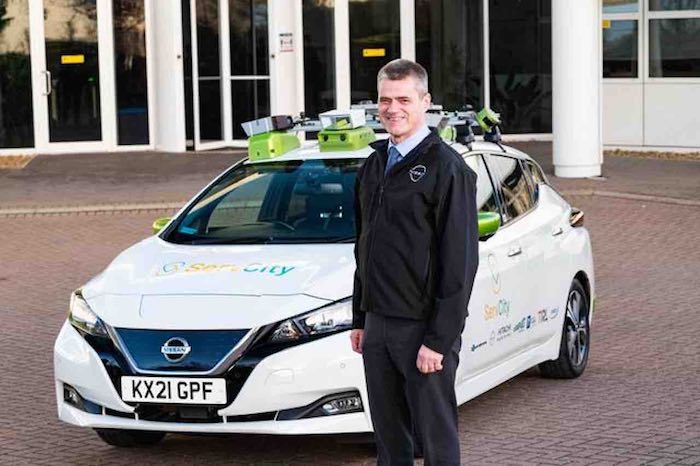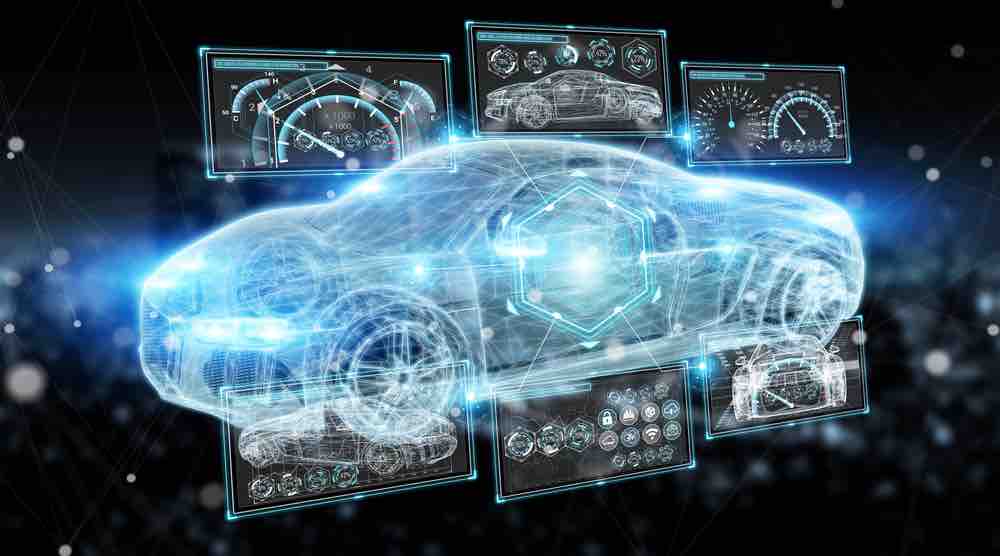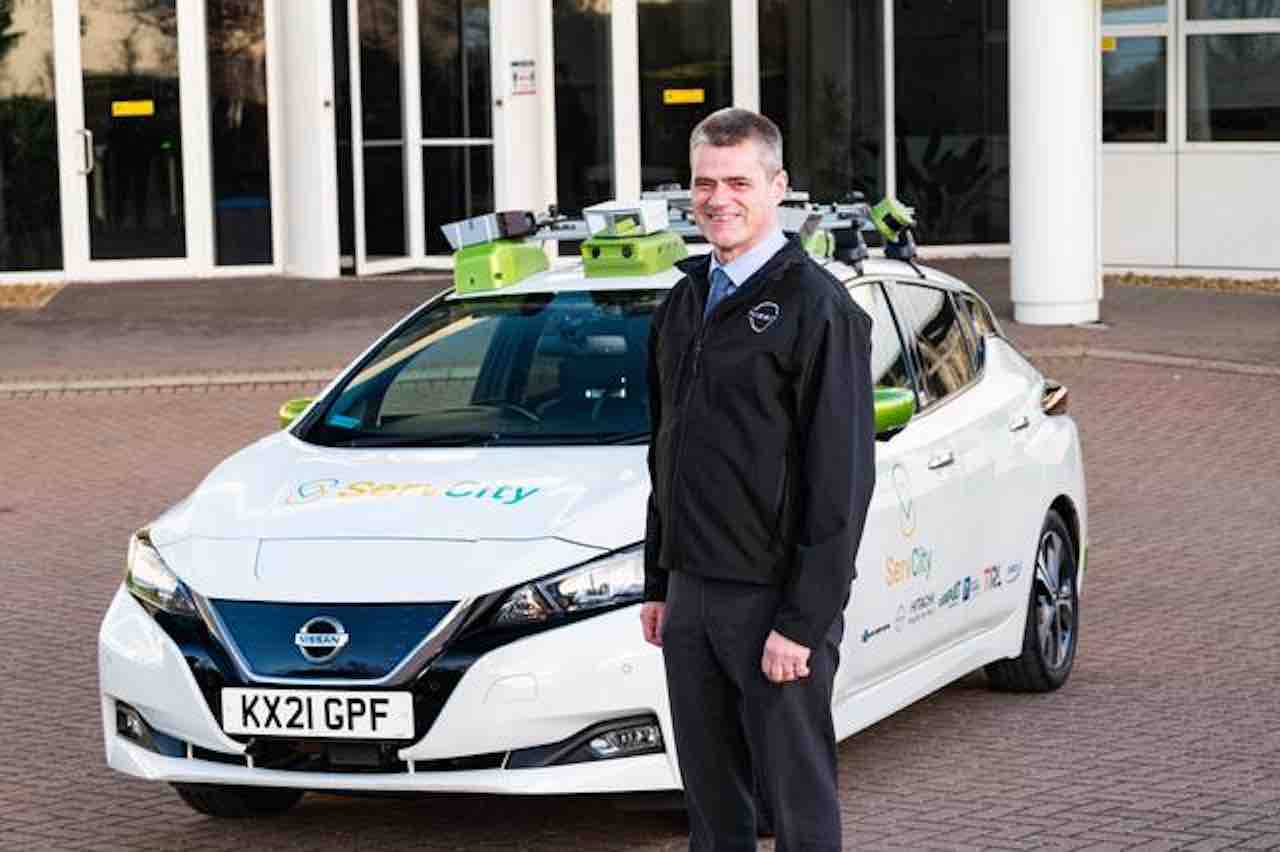In an interview with David MossSenior Vice President, Region Research & Development, Nissan AMIEO, riassume il present and future from the autonomous driving technologies Nissan.
 Present and future of Nissan autonomous driving technologies, press office source
Present and future of Nissan autonomous driving technologies, press office source
How autonomous driving is changing according to Nissan
Continuous and rapid developments in self-driving technologies are changing the way we travel. Helping create a safer and more inclusive society.
David Moss, Senior Vice President, Region Research & Development, Nissan AMIEO. In an interview, he describes Nissan’s commitment to this. The advantages of autonomous driving and the new challenges for the mobility of the future.
Why is Nissan developing self-driving technologies?
Nissan aims to reduce serious accidents and road deaths to zero. To achieve this goal, the effectiveness of autonomous driving technologies. And their wide diffusion play a fundamental role.
For Nissan, therefore, it is essential to increase its skills. On these technologies through research projects.
Nissan pioneers Lane Keep Assist technologies
We develop advanced systems of driver assistance system (ADAS) since the 1990s and we install them on all our cars.
We have been pioneers in launching technologies such as the Lane Keep Assist (2001) – which helps keep the car within its lane.
And theround View Monitor (2007), which provides a 360° top view of the car, very useful when parking and maneuvering and in small spaces.
To go even further we need to fully understand the potential of fully autonomous driving.
What are, in your opinion, the main advantages of self-driving vehicles?
First indisputable advantage: safety. Autonomous driving technologies, as well as driver assistance systems and advanced safety features. I can read my surroundings.
And, in the event of potential danger, react much faster and more effectively than the more experienced driver would.
These are systems capable of reducing or eliminating human error, which is responsible for over 90% of serious accidents.
Furthermore, autonomous driving technologies are designed to maximize driving efficiency. Both in terms of traffic flow and consumption. This, together with the development and diffusion of electrified engines, will make it possible to reduce CO2 emissions.
 Present and future of Nissan self-driving technologies, source DepositPhotos
Present and future of Nissan self-driving technologies, source DepositPhotos
Finally, when fully self-driving cars will be available. We will be able to offer mobility solutions to those who cannot drive today, for example due to age or disability.
What are the main challenges to the introduction of fully self-driving vehicles?
First of all, the fact that fully autonomous driving vehicles must be able to operate in any driving context. This changes from country to country and often from city to city: different types of track. Different vertical and horizontal signs, different highway codes, different concepts of viability.
Furthermore, they must be able to manage very complex situations such as city centres, characterized by congested traffic, the presence of other vehicles, cyclists and pedestrians.
Dealing with the future
We must also consider that in the coming decades self-driving vehicles will share the roads with traditional ones driven by real people.
More generally, I would say that the emergence of autonomous driving requires a holistic approach, involving automakers, regulators, urban planners and sociologists, who analyze the infrastructure, the public transport system, demand, geographical contexts and plan timing and methods of introduction of this technology.
How have autonomous driving systems changed in the last 10 years?
Everything is fine project brings with it challenges and allows us to broaden our knowledge. Our teams have worked hard to improve the driver experience and help them feel safer.
In the 2020, Nissan led the HumanDrive project, to understand how new technologies can make autonomous vehicle systems similar to humans and facilitate their acceptance and diffusion. Finished the same year, the Grand Drive – a 230-mile journey around the UK in fully autonomous driving mode – was a major achievement and demonstrated the technology’s ability to deal with complex road environments, such as roundabouts and dead-end country roads. of signage. An operation that required high levels of precision to detect the vehicle’s position on the road.
More recently, we completed ServCity, the Nissan-backed and UK Government-backed consortium project to develop advanced autonomous driving in complex urban environments.
Projects like these are critical to advancing our studies and demonstrating the feasibility and benefits of these technologies to governments and the public.
What was done during the ServCity research project?
ServCity is a 3-year research project and more than 1,600 kilometers of road tests, during which Nissan worked together with consortium partners to integrate autonomous driving technologies and city infrastructure.
Il ServCity’s Connected and Autonomous Vehicle (CAV) is a 100% electric Nissan LEAF, receiving data and information from the Smart Mobility Living Lab (SMLL) in Greenwich. Thanks to a dense network of sensors along the roads and an advanced data processing system, the SMLL allows the car to know what is happening around it and adjust accordingly. For example, the infrastructure is able to detect a traffic problem or an obstacle outside the vehicle’s field of vision (behind a bend or in the distance) and signal it to the car so that it can choose an alternative route or avoid the obstacle.
ServCity, like all previous UK Government-funded Connected and Autonomous Vehicle development projects, is a key tool for demonstrating the safety and benefits of self-driving vehicles.
What role does Nissan play in self-driving projects like ServCity?
Nissan’s regional and global R&D networks are all working on research projects and advanced autonomous driving programs with other consortium partners. In addition to projects conducted in the UK, Nissan teams in Silicon Valley and Yokohama have helped develop new technologies and how they can be integrated into our vehicles.
For the project ServCity, a dedicated team of engineers based at the Nissan Technical Center in Cranfield, UK, have integrated advanced sensors, AI systems and self-driving software into a LEAF, transforming the car into a fully autonomous Robotaxi.
Why is Nissan’s involvement in projects like ServCity important?
It is important for Nissan to participate in these programmes, as they facilitate and accelerate the introduction of self-driving solutions to market. Democratizing technology by making it accessible to as many people as possible is a key goal of Nissan’s long-term vision Ambition 2030.
What is the future of autonomous driving for Nissan?
We believe autonomous driving technologies can improve vehicle safety, reduce accidents and help make mobility more sustainable. We have 25 years of experience in driver assistance technologies and we are putting it to good use.
 Present and future of Nissan self-driving technologies, source DepositPhotos rendering
Present and future of Nissan self-driving technologies, source DepositPhotos rendering
By 2026, more than 2.5 million Nissan vehicles will be equipped with the ProPILOT driver assistance system.
ProPILOT Assist in the AMIEO Region and ProPILOT Assist 2.0 in the United States and Japan are among the most advanced autonomous driving systems available and are part of the many technologies currently made available to our customers to facilitate their driving experience.
By 2030, we aim to apply our Ground Truth Perception technology to the majority of our new models. This system uses a combination of new generation cameras, radar and LIDAR to read the surrounding environment and automatically act on the car’s guidance systems to avoid dangerous situations.
We are making major strides towards a fully autonomous vehicle.
















Leave a Reply
View Comments